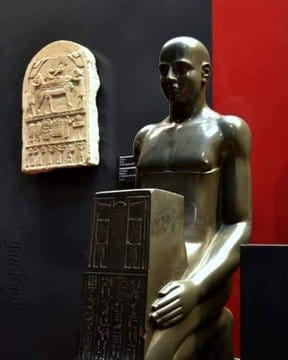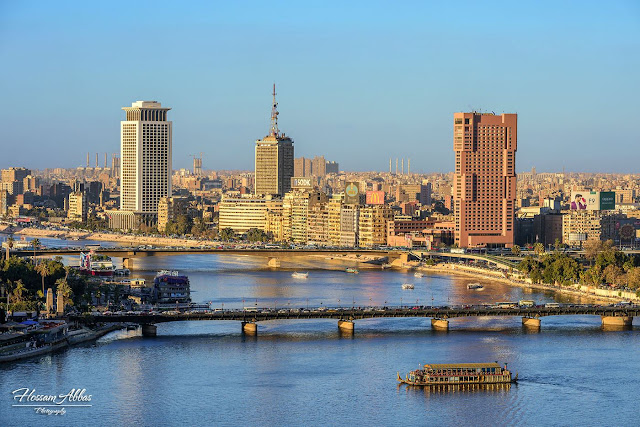Egypt came first, then history and civilization came. Egypt has one of the world's seven wonders of the pyramids. The Virgin Mary came to protect herself and her son. Egypt is the safest destination for tourism. My goal is to help foreigners learn my country’s history, come to Egypt, whatever your budget, and I will be your guide at no additional cost to you. booking with us. The goal is to service booking tours to Egypt. the best Nile cruise in Egypt. https://kingofegypttours.com
Showing posts with label HD PHOTO. Show all posts
Showing posts with label HD PHOTO. Show all posts
Monday 13 April 2020
Sunday 12 April 2020
The Temple of Edfu is an Egyptian temple located on the west bank
The Temple of Edfu is an Egyptian temple located on the west bank of the Nile in Edfu, Upper Egypt. The city was known in the Hellenistic period as Koinē Greek: Ἀπόλλωνος πόλις and Latin Apollonopolis Magna, after the chief god Horus, who was identified as Apollo under the interpretation graeca.[1] It is one of the best-preserved shrines in Egypt. The temple was built in the Ptolemaic Kingdom between 237 and 57 BC. The inscriptions on its walls provide important information on language, myth and religion during the Hellenistic period in Egypt. In particular, the Temple's inscribed building texts "provide details [both] of its construction, and also preserve information about the mythical interpretation of this and all other temples as the Island of Creation.
The Egyptian king Ramses II .
Abu Simbel, the site of the two temples built by the Egyptian king Ramses II (reigned 1279-13 BC), which is now located in Aswan Governorate in southern Egypt. The region was in antiquity on the southern border of Pharaonic Egypt, facing Nubia. The four colossal statues of Ramses in front of the main temple are stunning examples of ancient Egyptian art. Through a complex engineering achievement in the 1960s, the temples were rescued from the high waters of the Nile due to the construction of the Aswan High Dam.
Saturday 11 April 2020
The famouse Greenheads.
In front of us are three wonderful, beautifully crafted heads that their owners left and went to confuse us with their beauty and search for them
The first head is called (Head of Brooklyn), attributed to the museum's fame, and it is a priest of young age called (Auxerre), and we knew his name from the remains of the back pillar remaining behind his neck, in addition to having a wonderful statue completed in the Egyptian Museum wearing the priestly style in the Achaemenid style. Squatting is registered with his name and nickname and is a priest of the family era 26
The second head is called (the head of Berlin) because the museum is famous for it and it is a priest of the age of completeness of manhood. Unfortunately, it is unknown because the head was found on its own and we did not find even the remains of a statue and the absence of inscriptions or head covering on a particular style that makes it very difficult to identify.
The report of the Egyptian Museum says when it was found that it dates back to the time of the family 26 to 30 and it is the right opinion indeed. If we return to these families we notice the spread of such statues of the same stone on a very large scale and that this family was the beginning of the awakening of Egyptian art again even with Ptolemaic occupation.
The third head is called (Boston Head), also attributed to the museum's fame. It is a priest with clear signs of greying stones found in the Sarabium of Saqqara. It was also dated to the late captivity and means for its similarity to the rest of the statues of that era.
A ring of pure gold engraved with the cartridge of King Khufu.
A ring of pure gold engraved with the cartridge of King Khufu, the owner of the Great Pyramid and the second ruler of the Fourth Dynasty around 2580 BC.
But the ring does not belong to the reign of King (Khufu) and may have been made by the priests of the family 26 or 27 in the period between (664 - 404 BC) veneration of the great king
The cartridge also holds the priestly titles of the owner of the ring, the servant of the god, the judge, the priest of the consort called (Nefer Ib Ra).
Brooklyn Museum of Art. New York
Wonderful, old Egyptian, the frontal depiction of the face of an owl
Wonderful, old Egyptian, the frontal depiction of the face of an owl that shows the amazing details of the face of the owl in a way that is surprising. It is worth noting that the owl symbolizes in the ancient Egyptian language the letter M
Limestone - Late or Ptolemaic Period - The Metropolitan Museum
Carved plaque bearing the face of an owl hieroglyph
Period: Late period - Ptolemaic period
History: 400-30 BC.
Medium: limestone
Current location: The Metropolitan Museum
Subscribe to:
Posts (Atom)
GOOD MORNING FROM EGYPT EGYPT READY NOW مصر مستنياك
GOOD MORNING FROM EGYPT EGYPT READY NOW مصر مستنياك http://kingofegypttours.com/ Egipto te espera http://kingofegypttours.com/ Egypt is wa...

-
GOOD MORNING FROM EGYPT EGYPT READY NOW مصر مستنياك http://kingofegypttours.com/ Egipto te espera http://kingofegypttours.com/ Egypt is wa...
-
Another miracle of the ancient Egyptians Ben Ben's pyramid .. The Black Magnetic Pyramid. This pyramid, which has puzzled scie...


































